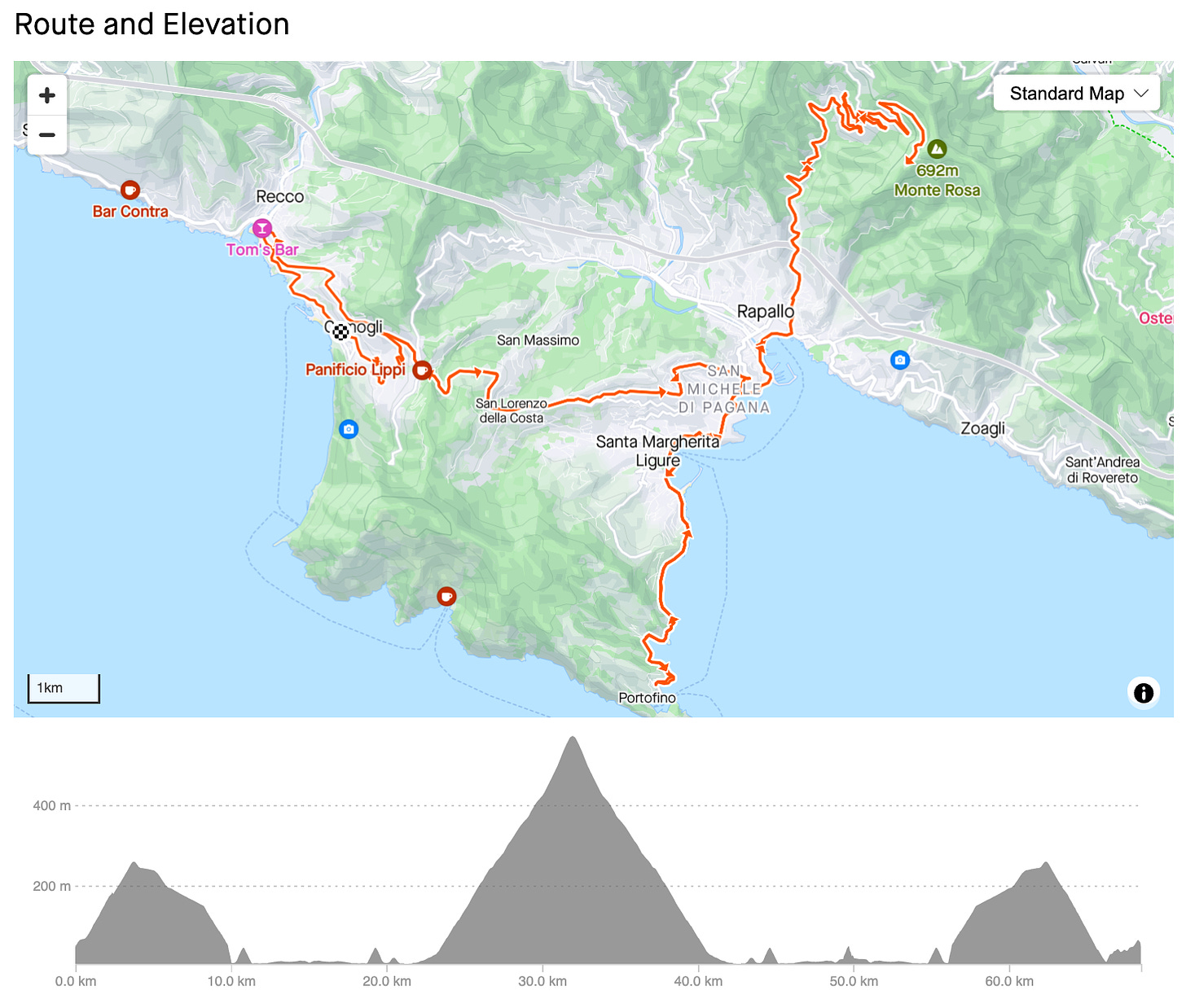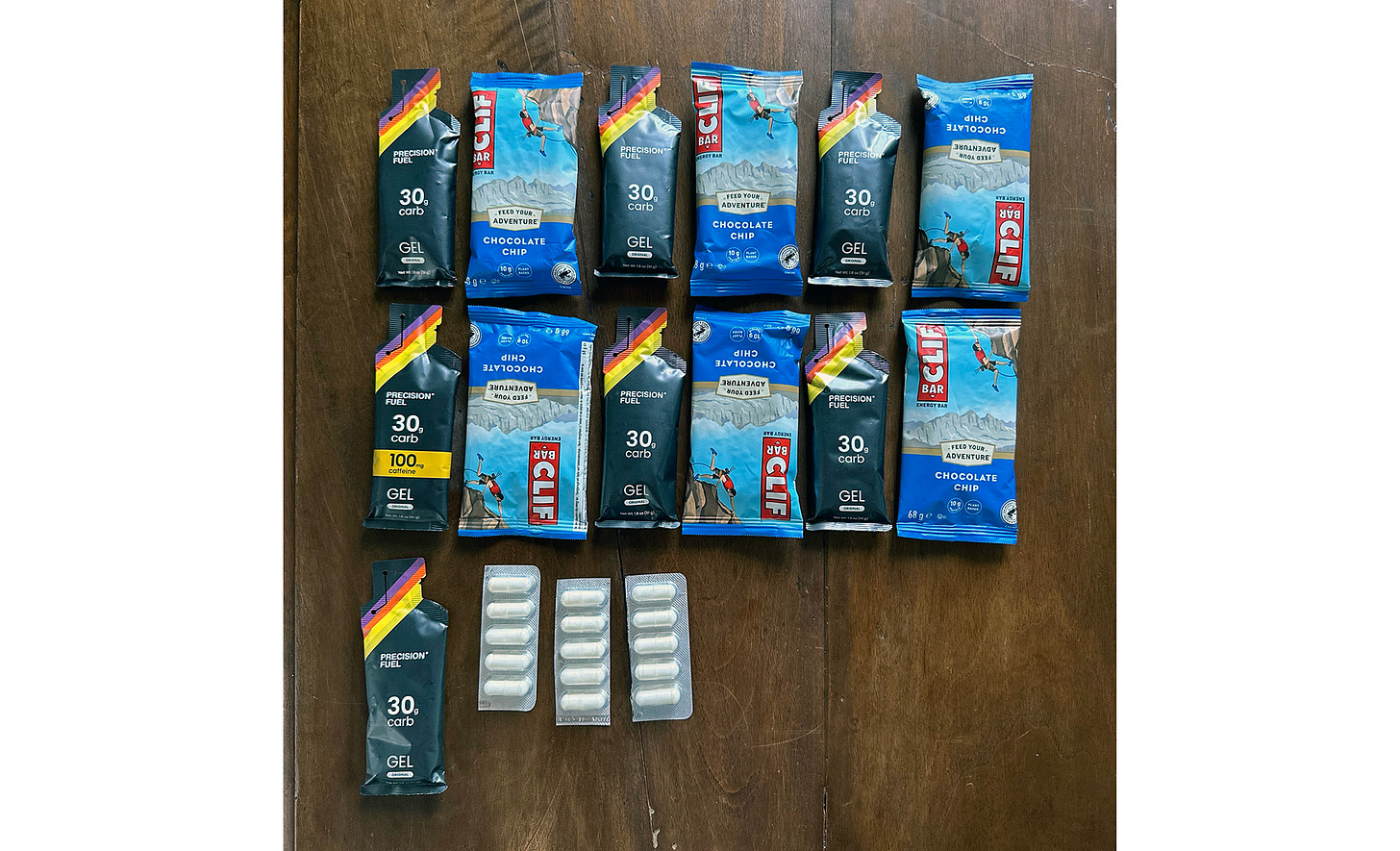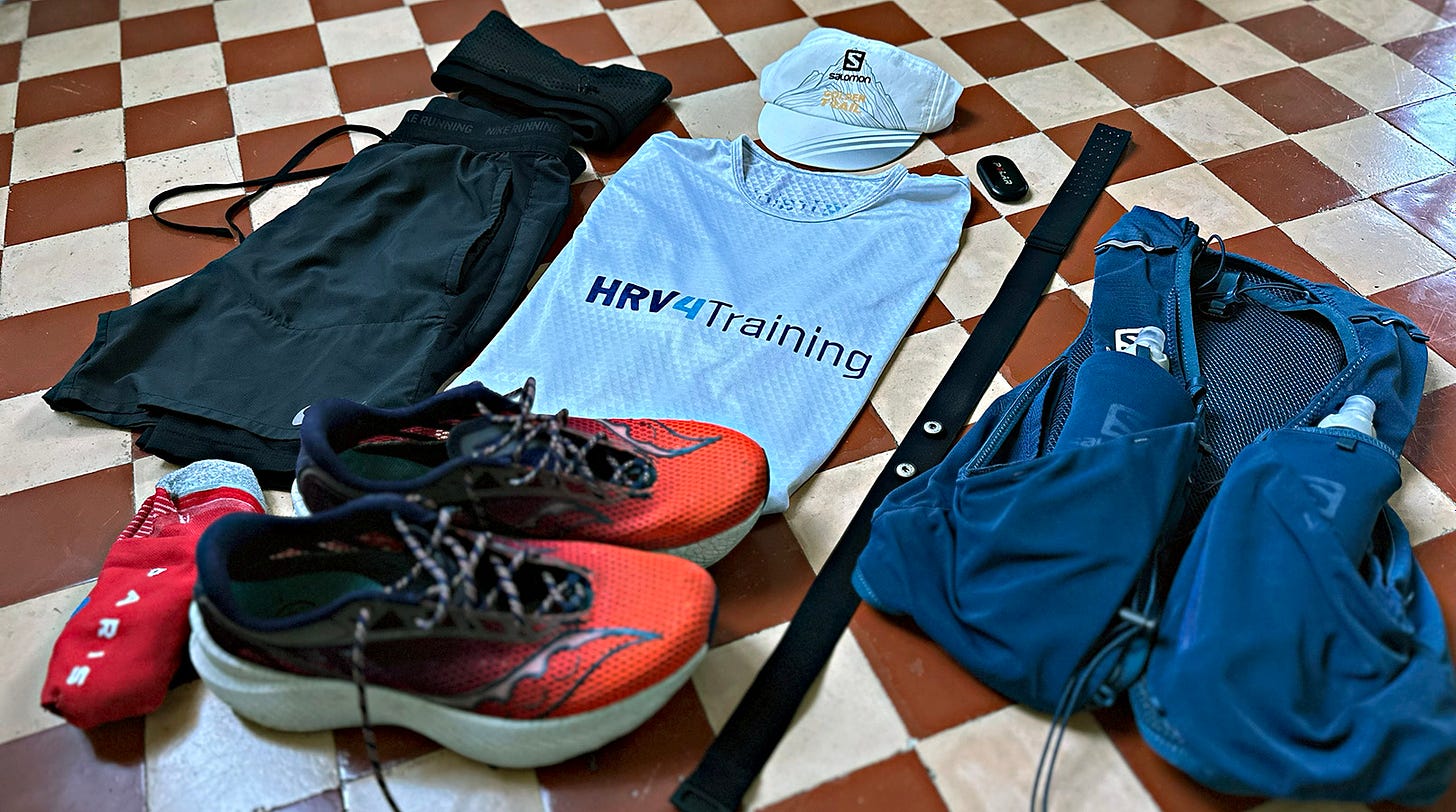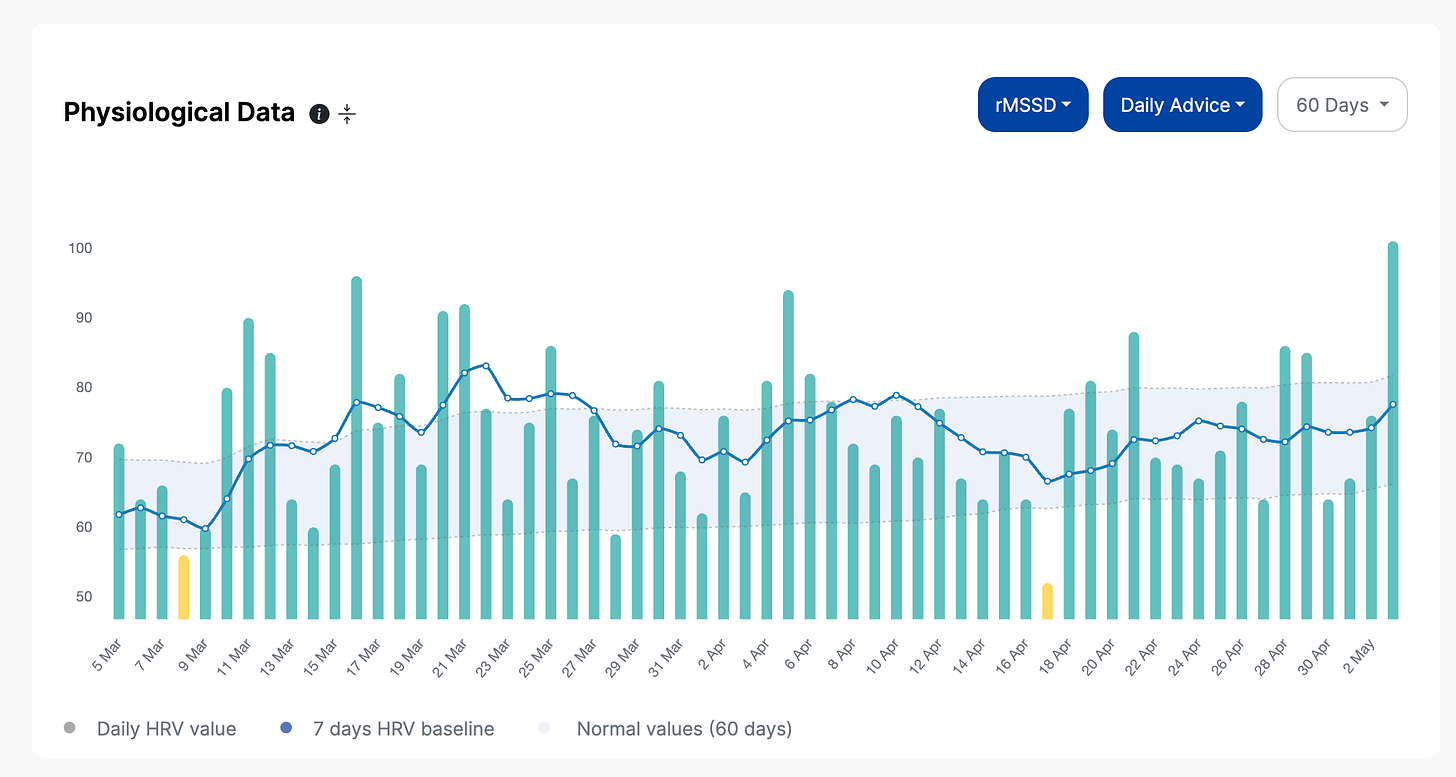100 km del Passatore: race simulation
Testing the legs, the gut, the mind, the kit and the plan. Let's go.
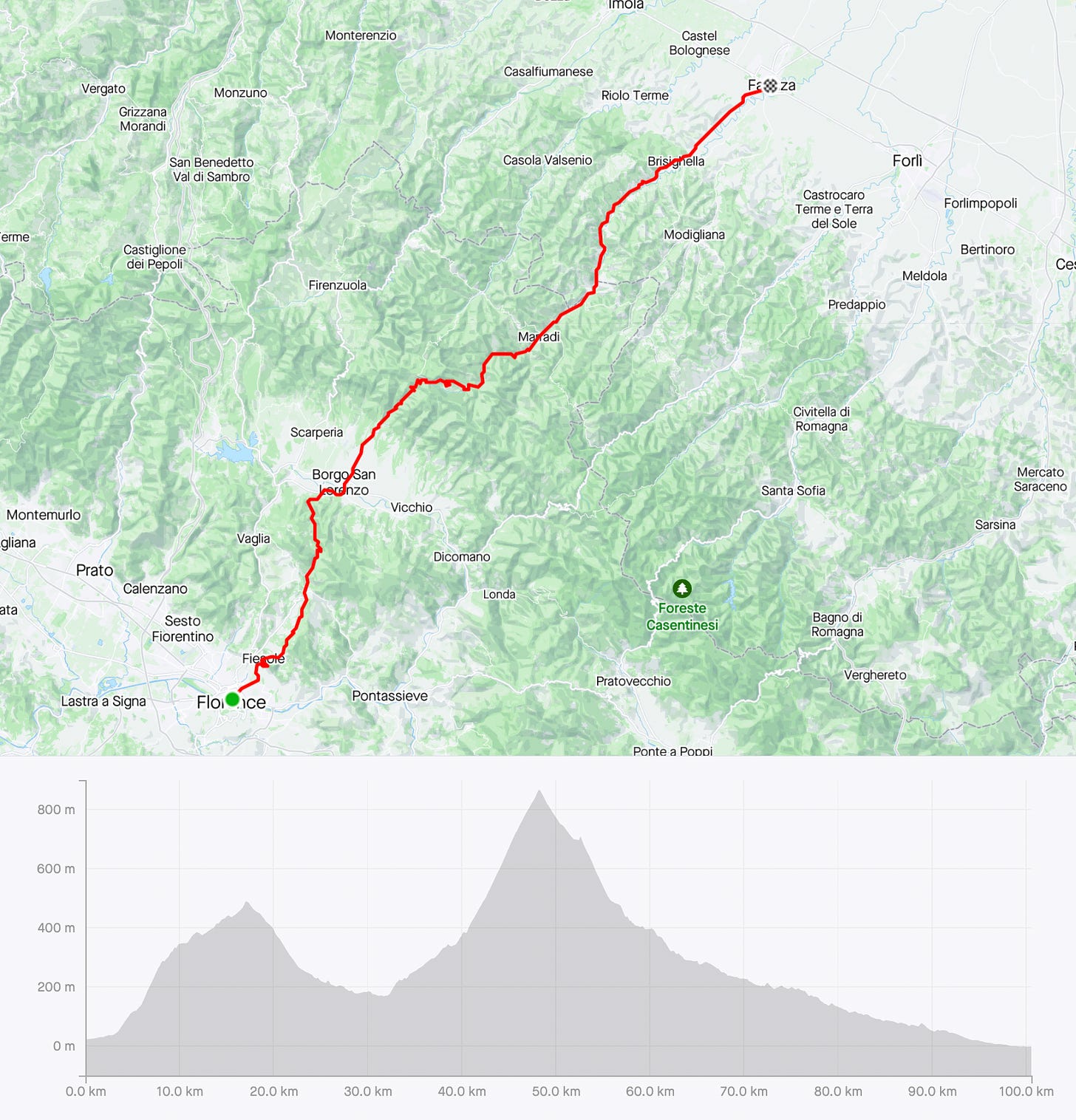
Tomorrow I’ll go out for a race simulation in preparation for the 100 km del Passatore, which will take place on May 27th. Last year I wasn’t in the physical or mental conditions for anything like this, but a lot has changed in the past 12 months, and I think this is now the right move even if we are quite close to the race.
As a race simulation, I will go out for 60-70 kilometers, or approximately two-thirds of the race. This is quite a lot and likely irrelevant from a “physical training” perspective (I would probably be better off with a training stimulus like e.g. 40-50 km with 20 km harder, as opposed to a very long effort at race pace), so why am I doing it?
Well, in an ultra, physical training is necessary but not sufficient. In particular, I know that if I go out for 40-50 km I do not face any of the challenges that can get me in trouble on race day. I need to go quite a bit longer to put myself in a situation in which the following can happen: fueling is insufficient after 5-6 hours, or eating the same food for so long gets me nauseous, or I get a niggle somewhere and I need to work through it, or I cramp badly on a long downhill after running 5 hours and I need to also work through it, or I have issues with hydration, etc. - I need this very long day to challenge myself to the point that is not quite the race, but at the same time, is not as predictable as training.
As a rather anxious and insecure person, this is also necessary mentally, to gain confidence that I can actually finish the race this year.
Despite my love for distance, my limiters don’t go well with it (inefficiency, cramps, etc.) - and I lack confidence that my body won’t let me down.
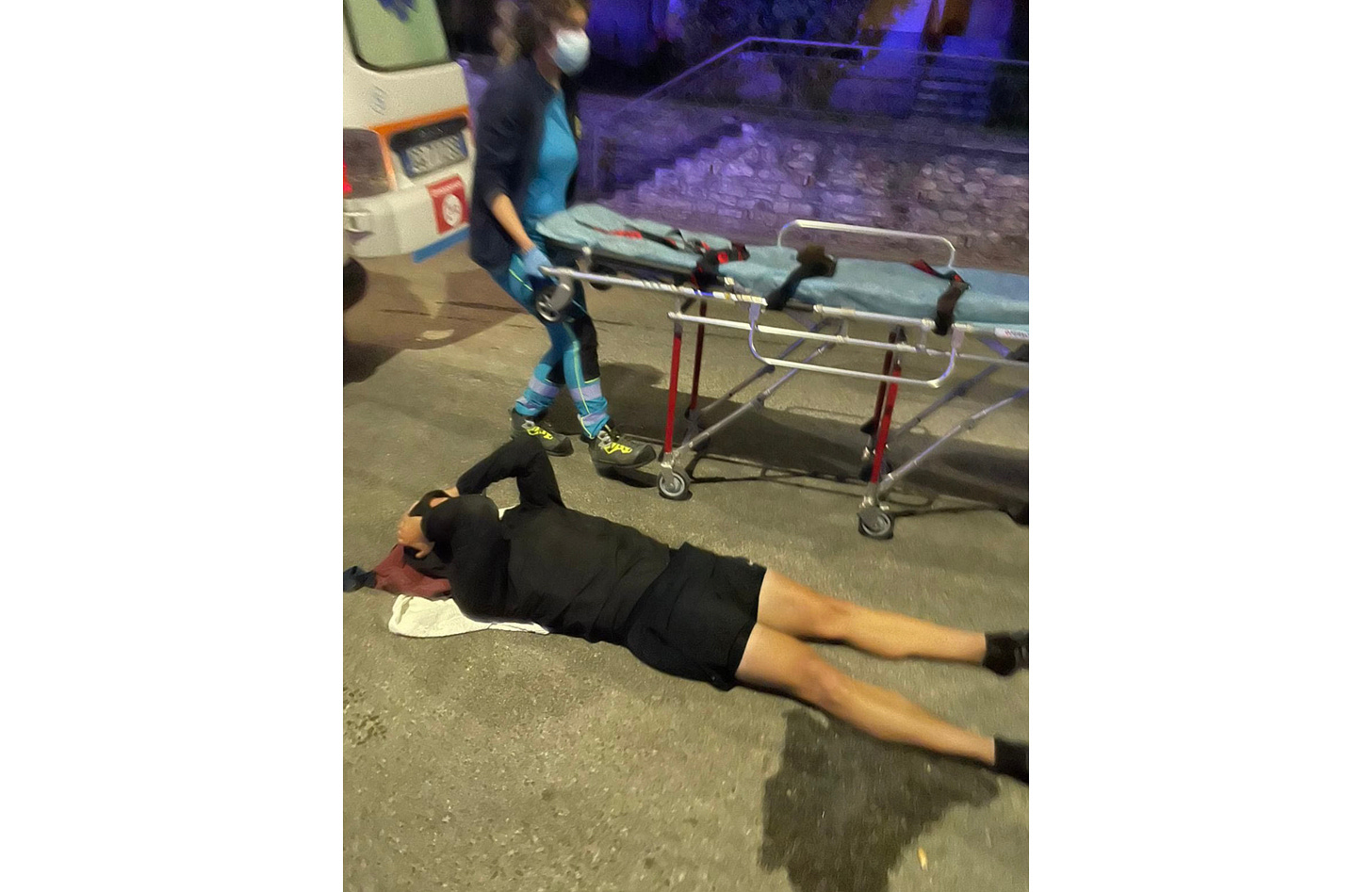
The route
The race is all on asphalt and includes almost no flat roads until the very end. This is also why I am in Liguria right now, as it would not be possible to prepare well for this event in Amsterdam.
I have created a route that includes quite some similarities with the race, in particular a 9 km long climb and descent, and other steep, long hills, that will feel a lot like on race day.
I do have some flexibility in case I don’t feel well and I want to cut it short(er).
The race includes 1450 meters of climbing, while I will do 1350 meters on a shorter loop, including climbs and descents at the same grades (5-9%), which are all runnable but have a large impact on pretty much everything (pace, biomechanics, impact, fueling, etc.) as they are challenging grades on asphalt.
Pre-simulation fueling
I have adopted my usual protocol that I used all year: a normal diet until 3 days prior to the race (or simulation in this case), then the last 48 hours, a diet heavier in carbs, but without overdoing it.
In particular, I had pasta yesterday for lunch, and pizza for dinner, and I will have pasta again today for dinner, but I will eat just a salad for lunch (I would normally eat pasta once per week tops, so this is plenty more). I want to load on carbs a bit but I do not want to feel bloated as it happens when I overdo it.
Fueling plan
In the last year, I have experimented quite a bit, and this is eventually what I ended up deciding to eat for the race and the simulation:
1 gel before starting
alternate 1 gel and 1 Clif bar every 6 km, together with a sodium pill
I will carry some backup options (e.g. food that is not sweet, like focaccia), and some extra in case I get hungry or tired of these, but I tried them for quite long runs before and it should be fine.
The precision hydration gels contain more carbs than most gels, which gives me almost 70 grams over 12 km. I have not been able to eat more than this, and I think this is already difficult if it is a bit warm or if the pace is a bit faster (e.g. on downhills), but I will try to stick to the plan and see how it goes.
This is an important part of the simulation.
Intensity
I want to do this simulation at a reasonable effort, not just as a jog.
If it doesn’t go well, I will learn that for race day I better focus on staying relaxed and running as effortlessly as possible, but I need to first try and see if I can race it to the best of my abilities.
I plan to run by perceived effort and monitor my heart rate, which I will try to keep below 145 bpm or maybe let it slip up to 150 bpm on steeper hills (for reference, this should be near my first lactate threshold, and I would race a marathon at 158-160 bpm).
On the downhills, I’ll go by perceived effort as I have to limit muscle damage regardless of where heart rate will be (likely quite a bit lower). I need the downhills to feel very easy or I won’t make it to the end.
In terms of pace, on a good day, I think I can be quite a bit below 10 hours for 100 km on this course, and I will keep that as a reference for now. Given the hills, there are about 10-15 seconds per kilometer between the actual pace and grade-adjusted pace, and I’d be happy to run around 5’45”/km, including breaks.
Breaks
I plan to stop to fill up my water bottles twice (for a total of 3 liters of water, but I can stop more often if needed), and pee also twice.
I’ve checked fountains on the route and it should not take me more than 1-2 extra minutes to get it done.
I otherwise plan to run the whole time also during the long climb and descent.
Kit
I will wear the same things I will wear on race day: a white t-shirt and hat, as it’s probably going to be hot, a hydration pack with water and food, and the same shoes I used for recent races.
Weather
The weather remains the biggest unknown for race day.
As the race is the last weekend of May, it is not necessarily crazy hot. In fact, last year was one of the hottest race days in the past 15 editions, and I am secretly hoping we’ll get a good day this time. Regardless, it is also quite possible that it will be again 30+ C in Florence at 3pm for the start of the race, and this is something I cannot test now.
This is often the issue with races in spring or early summer, the weather changes and we can only adjust with a little delay. I have picked tomorrow as it will be sunny and it will be the warmest day in the past 2 weeks, so I will at least be a bit challenged by the weather (the max temperature will be however only 23C, even though in the sun it will definitely feel warm).
I have also just finished 2 weeks of passive heat acclimation, hence I am at least putting that to the test.
Wrapup
I’m really looking forward to tomorrow.
Last year I wanted to do this but I just didn’t have it in me, while recently things have changed a lot and I am feeling good and ready to try.
My data looks also very different from last year, when I was already in a hole at this point, while now I’m trending well and stable, with a very quick comeback even from the sub-3-hour marathon (April 16th). If anything, good signs.
I hope it will go well, especially in terms of physical breakdown, as I have some spots where I often feel pain after running 5-6 hours on hills (e.g. my right knee, please behave), and I am often plagued by cramps.
Let’s go.
Marco holds a PhD cum laude in applied machine learning, a M.Sc. cum laude in computer science engineering, and a M.Sc. cum laude in human movement sciences and high-performance coaching.
He has published more than 50 papers and patents at the intersection between physiology, health, technology, and human performance.
He is co-founder of HRV4Training, advisor at Oura, guest lecturer at VU Amsterdam, and editor for IEEE Pervasive Computing Magazine. He loves running.
Twitter: @altini_marco



